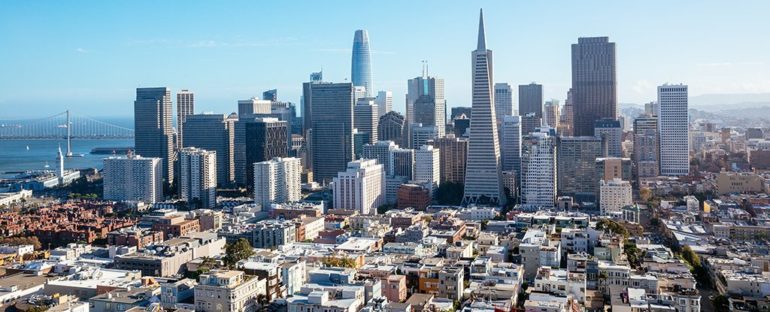Cities don’t just have sea level rises to worry about – they’re also slowly sinking under the weight of their own development, according to new research, which emphasises the importance of factoring subsidence into models of climate change risk.
Geophysicist Tom Parsons, from the United States Geological Survey (USGS) agency, looked at San Francisco as a case study of how large urban developments could be affecting and depressing the actual surface of the Earth.
By his calculations, San Francisco might have sunk as much as 80 millimetres (3.1 inches) as the city has grown over time. Considering the Bay Area is under threat from as much as 300 mm (11.8 inches) of sea level rise by 2050, the extra variation added by slow subsidence is significant enough to be concerning.
“As global populations move disproportionately toward the coasts, this additional subsidence in combination with expected sea level rise may exacerbate risk associated with inundation,” writes Parsons in his paper.
Taking into account an inventory of all the buildings in the city and their contents, the study calculated the weight of San Francisco (population: 7.75 million) as being around 1.6 trillion kilograms – about 3.5 trillion pounds, or roughly 8.7 million Boeing 747s.
That could be enough to both bend the actual lithosphere on which the urban centre sits, and perhaps more significantly, to change the relative levels of fault blocks – the floating chunks of rock that make up Earth’s surface.
In fact the 80 mm of slip is likely to be a conservative estimate, as the weight calculations didn’t include things outside buildings – including transport infrastructure, vehicles, or people. The same sort of sinking is likely in other parts of the world, though it partially depends on the local geology.
“The specific results found for the San Francisco Bay Area are likely to apply to any major urban centre, though with varying importance,” writes Parsons.
“Anthropogenic loading effects at tectonically active continental margins are likely greater than more stable continental interiors where the lithosphere tends to be thicker and more rigid.”
There are plenty of other causes of subsidence to think about too, including tectonic plate shifting and the groundwater pumping necessary to support a growing population – something we’ve seen cause significant city sinking in other parts of the world.
While this current study only looked at San Francisco, and made some broad assumptions in terms of modelling, the findings are notable enough to make city weight another consideration when scientists are figuring out how geography might change over time, and which areas are under threat as the sea level gets higher.
There’s still plenty of detail to dig into as well, particularly in cities already under threat from subsidence. The compaction of sediment and aquifer systems under San Francisco International Airport on the coast – the heaviest building in the city – has already been calculated as causing 4 mm (0.16 inches) of sinking each year.
“It should be possible to improve on the methods presented here by using satellite or air photos to make more detailed analyses in likely flood zones,” writes Parsons.
“Such detailed analyses might also yield better insights about changes to subsurface porosity changes and resultant fluid flow.”
The research has been published in AGU Advances.



